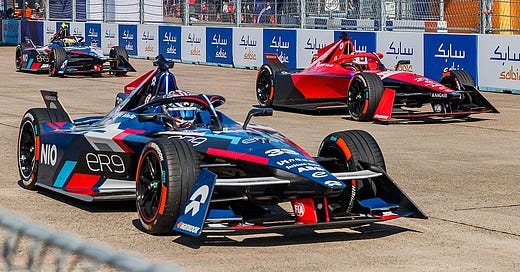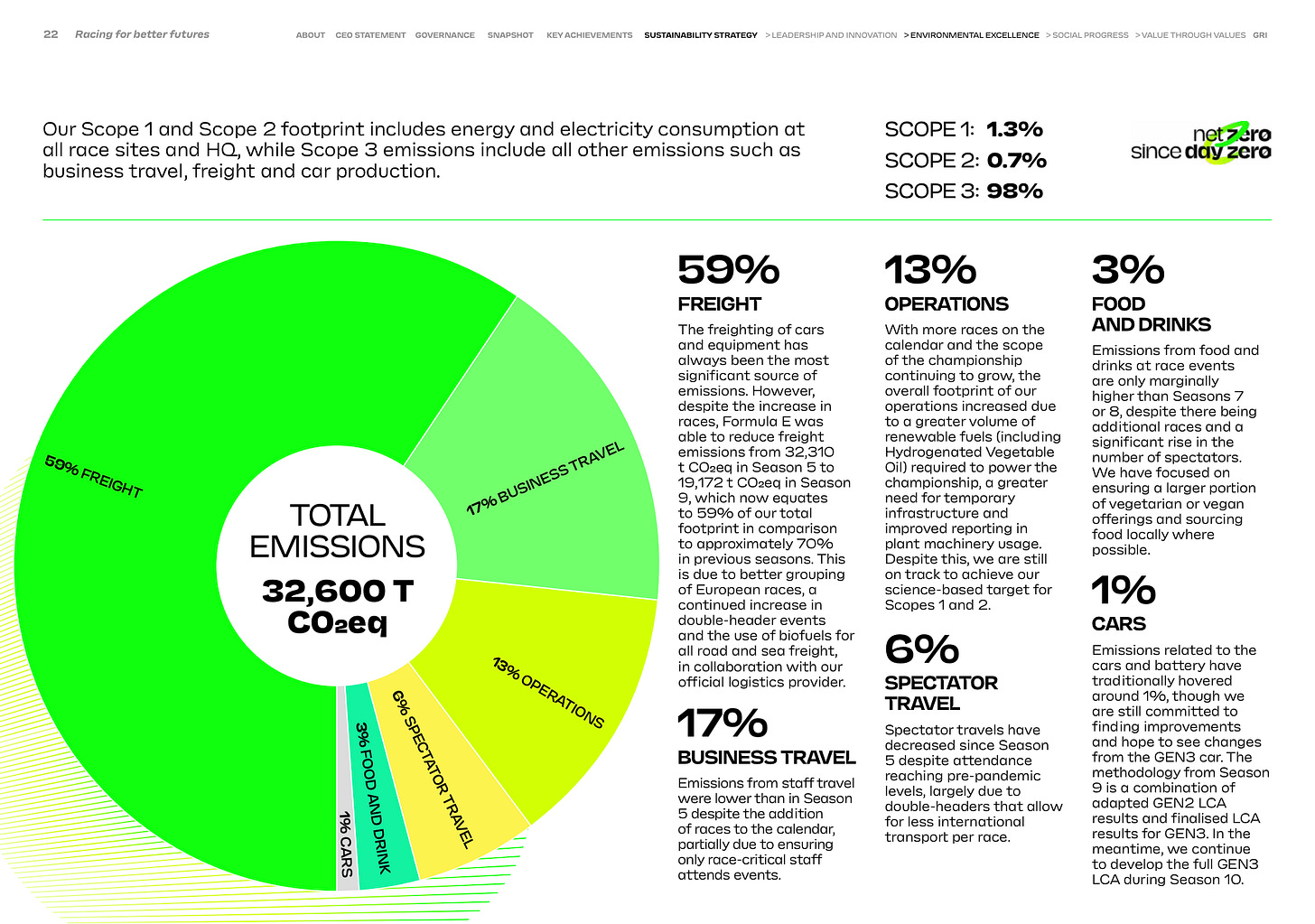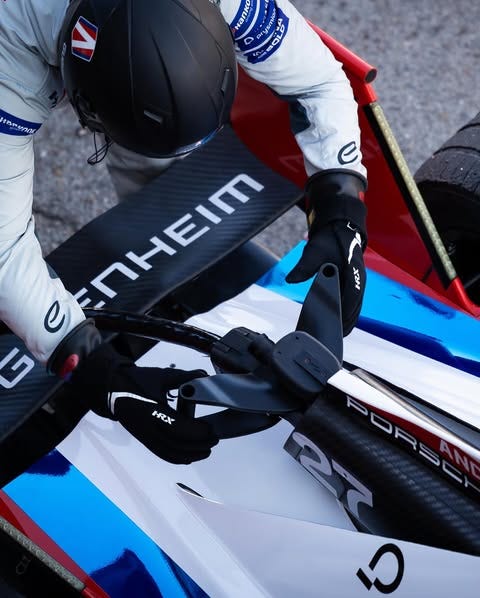Like many, I got into Formula 1 after watching the Netflix series “Drive to Survive”. Since then, I’ve been converted into a bit of a fan, going to Silverstone twice in three years and waking up at antisocial hours to watch Grand Prix in Suzuka or Albert Park.
More recently, I’ve been interested in how Formula E has developed underneath this resurgence. Formula E first emerged in 2014 as a a new vision for motorsport, where net zero would be baked in to the events & logistics from the start.
While F1 continues to dominate global viewership and mindshare, Formula E has been growing steadily… but is still a long way off Formula 1. This week, we look into the history and progression of Formula -E, and how it is unlocking new technological innovations for us on the roadside.
Looking into the history, progression, and technology transfers in Formula-E 🗞️
Formula-E: the origin story
Formula 1 has dominated as the world’s largest motorsport brand. Since the first Grand Prix in May 1950, F1 has built the some of the world’s fastest cars, enabled innovation & technology transfers for the broader auto industry, and catalysed a cult following of millions of fans worldwide. In 2021, F1 had over >750m global fans engaging with races and media.
So, in 2011, Formula-E burst onto the stage, it was going to have to compete against a LOT to win hearts and minds. The FIA President Jean Todt and Spanish entrepreneur Alejandro Agag proposed a new vision: a fully electric, racing, global series showcasing the potential of sustainable mobility.
The first formula-e grand prix took place in 2014 on the Beijing circuit. This was the first electric single-seater championship under the FIA banner. Over the next decade, Formula E would expanded to 12 teams and work with manufacturers like Jaguar, Nissan, Porsche, Mercedes, and Audi.
The carbon cost between Formula 1 and Formula-E
F1 reports an estimate of top-level carbon impacts for all teams, fans, and organisers. In 2019, this c.256k tCO2e. In 2022, this was c.223k tCO2e.
The majority of F1’s emissions are not from the racing, but rather from the logistics of running the races globally. Actually, the cars only contribute 0.7% of emissions. By comparison, close to 50% come from logistics across road, air, and sea (imagine getting the 20 cars plus parts from Saudi Arabia, to Miami, to Emilia Romagna within 1 month!!).
Formula E emits <15% of the emissions of Formula 1 (33k tCO2e vs. 223k tCO2e). The major carbon drivers are the same: 59% is freight, 17% is business travel, and 13% is operations. These ‘unavoidable’ emissions are then offset, so that Formula E retains a net zero emissions profile.
Viewership evolution: persistence of brand
Formula 1’s dominance is evidenced strongly in viewership data and brand awareness. This has grown in part thanks in part to the Netflix “Drive to Survive” docuseries (below), with social media following and unique viewers growign almost 3x over a four year period. This is also on the back of a Covid-19 comp where races where either off or reduced.
By 2024, F1’s season averaged over 85 million TV viewers per race and reached around 1.6 billion viewers total across all events.
Formula E’s cumulative viewership since inception is close to 491m viewers. While this isn’t a like for like comparison, it’s still indicative of a much smaller platform compared to F1. Redbull published a dedicated article looking at F1 and Formula E going head to head by viewership. An average F1 Grand Prix in 2022 drew ~70 million TV viewers, whereas an average Formula E race in 2022 drew on the order of ~20m. Live attendance shows a similar picture: F1 saw 7m spectators at trackside in 2024, whereas Formula E typically races in smaller urban venues with tens of thousands of on-site fans (average attendance is around 14-15k participants).
Technology transfer from track to road
Battery and powertrain advancements developed in Formula E have fed back into commercial EV development. Gen1 cars, developed between 2014–2017, had batteries which were so limited that drivers had to swap cars mid-race because one battery could not last a full 45-minute race.
The second generation, across 2018–2022, saw battery capacity & efficiency improve enough to finish races on a single charge, and power output jumped from 200 kW to 250 kW (roughly 335 horsepower equivalent) without compromising range. These gains were achieved through better cell chemistry, thermal management, and regenerative braking, which were all directly relevant to consumer EVs.
Regenerative braking is one clear example: Formula E engineers pushed the limits of regen systems to recapture as much as 40–50% of the energy used per race through braking. This led to sophisticated brake-by-wire and energy recovery systems.
Power electronics and drivetrain components have also improved via Formula E. Teams are allowed to design their own electric motors, inverters, gearboxes, and software (while the chassis and battery are standardized). Manufacturers like Jaguar, Porsche, and Mercedes have all cited their Formula E programs as instrumental in refining their EV drivetrain technology for road cars.
The latest season, S11, has introduced Pit Boost, which is a new mandatory mid-race feature that sees cars get a 10% energy increase (3.85kWh) through a 30-second, 600kW boost in the pit lane. All drivers need to stop during the race for this extra energy.
🗣️ Review of the Week
👋 Getting in Touch
If you’re looking for funding, you can get in touch here.
Don’t be shy, get in touch on LinkedIn or on our Website 🎉.
We are open to feedback: let us know what more you’d like to hear about 💪.








